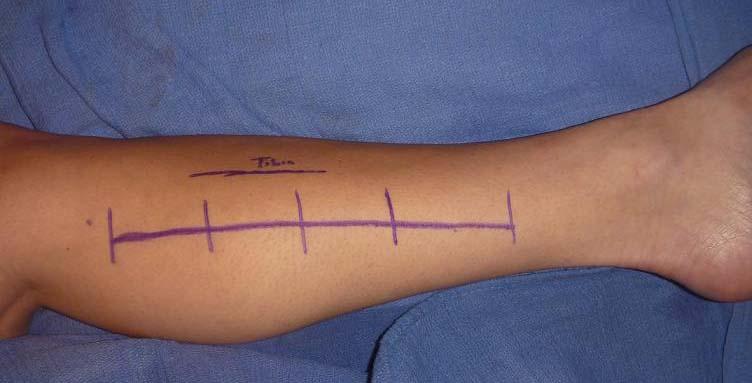
3 There may be reports of transient parasthesia or paresis, as well. 2, 7 Pain is often resolved in minutes to an hour following cessation of the provoking activity. The subject who presents with CECS complains of cramping, burning, or achy pain and tightness in the lower leg with exercise.
.jpg)

5, 33 Men and women have a relatively equal rate of prevalence in developing CECS. 8, 14 Cases involving lower extremity CECS are most often seen in runners. The anterior compartment is most often involved followed by the lateral compartment and least commonly the deep posterior compartment. 32 Each of these compartments is encased by fascia with their own anatomical structures ( Table 1). 13, 29– 31 The anatomy of the leg consists of four compartments that contain muscles and neurovascular bundles. 7ĬECS is seen in various extremities like the thigh, forearm and foot, although most frequently it involves the lower leg and occurs bilaterally from 60–95% of the cases. 26 Physical overtraining and resultant rapid muscle expansion may contribute to the intercompartmental compressive forces. 26 Tissue ischemia can then result, which in turn may bring on the symptoms of pain until the provoking activity is stopped and normal tissue perfusion returns. This leads to interstitial pressure increase and decreased blood perfusion. 26 Fronek et al 12 suggests that vigorous exercise may acutely raise a compartments muscle weight by 20%. 2, 7, 26– 28 The pathophysiology of CECS is generally accepted as the rise in the intracompartmental pressure during and after exercise of the involved muscles due to the relative unyielding fascia of each compartment. However, the etiology of CECS is still unclear. 9, 11, 25Ĭhronic exertional compartment syndrome is a well‐recognized condition that chiefly affects young, physically active people. 24 Furthermore, little has been published regarding the management of this problem in military personnel, and particularly the Special Forces Soldier. 23 There is also no universally accepted instrument used to evaluate changes in self‐reported physical function for individuals with leg, ankle and foot musculoskeletal disorders. 7– 22 However, there has been little published in the form of a scientifically‐based post‐operative protocol with regard to appropriate progression and tissue healing time. 2– 6 There has been a large volume of research dedicated to the detection, diagnosis, and surgical management of CECS. The prevalence of CECS has been well documented in both an athletic and non‐athletic populations for over 55 years.
Fasciotomy of leg skin#
Burning or tingling in the skin or feelingsĬhronic (exertional) compartment syndromeĬhronic compartment syndrome is an overuse injury usually found in athletes and primarily affecting the legs (especially the quads or calves). The associated swelling and potential for tissue damage less severe than in acute compartment syndrome. Altering or ceasing activity may allow the muscle inflammation to subside, but if this does not work, a fasciotomy may be required.Chronic Exertional Compartment Syndrome (CECS) was first described by Mavor 1 in 1956 who is cited as the first surgeon to perform a compartment release fasciotomy for CECS.Unexpectedly intense pain in the muscle, which worsens with use.In these cases, loosening the constriction, if done in a timely manner, may avoid the need for surgery.Ĭommon symptoms of acute compartment syndrome are: It can also sometimes be caused by a splint, bandage or cast that is fitted too tightly. Anyone with this condition should go to the nearest emergency room.Īcute compartment syndrome is usually caused by an impact trauma, such as a bone fracture or severely bruised muscle. The condition is commonly associated with automobile and industrial accidents, as well as competitive sports. The surgery, called a fasciotomy, involves cutting open the fascia to allow the muscle to swell without causing additional damage. This is a medical emergency that requires immediate surgery to prevent the possible necrosis (death) of muscles, nerves and/or blood vessels. There are two major types of compartment syndrome.

This leaves no room for the muscles to expand, leading to damage to the muscle tissue as well as to neighboring blood vessels and nerves. Unlike skin, ligaments or other soft tissues, fascia does not stretch. When the muscle group within one or more of the compartments swells, it is contained by the fascia. The leg, for example, contains four muscle compartments, each surrounded by tissue called the fascia. It most typically occurs in the leg or arm. Compartment syndrome refers to muscle swelling and resulting complications.


 0 kommentar(er)
0 kommentar(er)
